Nov 7, 2025
TC Energy project boosts Whitebark Pine conservation and recovery efforts with Ktunaxa-owned Nupqu
Posted by TC Energy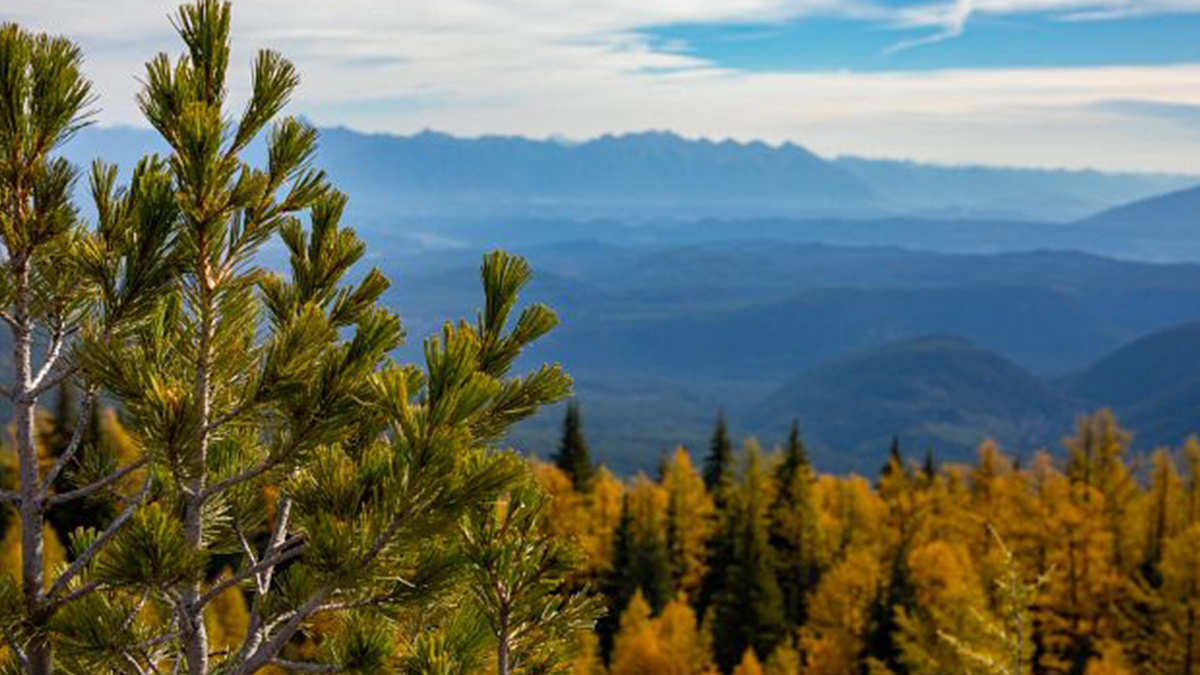
As part of TC Energy’s commitment to environmental stewardship and advancing reconciliation between Indigenous and non-Indigenous peoples, the West Path Delivery Program Foothills 2023 Elko section recently invested in the expansion of the Nupqu Native Plant Nursery capacity to grow Whitebark Pine seedlings, with the aim to restore the threatened tree species in southeastern B.C. The funding was facilitated through TC Energy’s Indigenous Relations Business Engagement team, who supports contracting and employment opportunities for Indigenous groups.
“The nursery was a good fit for the project for two reasons,” said Joni Lei Cardona, West Path Delivery Program Project Manager. “First, the initiative allows us to support the Ktunaxa Nation by working with one of its businesses, Nupqu Resource Limited Partnership. The work will enhance storage and building facilities, and feature a new climate-controlled environment to support capacity to grow 100,000 Whitebark Pine seedlings and establish Nupqu’s Native Plants Nursery as a reliable seedling supplier in the area. In doing so, employment opportunities for Ktunaxa citizens are created through an initiative that aligns with their sustainable resource management values.
“Second, the nursery facilitates specific projects in the West Path Delivery 2022 and 2023 Program – Elko, Lundbreck, ABC and Yahk sections – to have an active role in Whitebark Pine conservation and recovery.”
Added Jason Andrew, Senior Manager of the Ktunaxa Nation Council Economic Investment Sector, “this project will not only benefit a Ktunaxa-owned business, Nupqu, but it will benefit Ktunaxa by enhancing the vitality and diversity of re-forested sites. Selecting, growing and planting rust-resistant q̓anǂat̕ana may increase the chances of the species recovering in the homelands.”
In advance of nursery construction and operation, the first phase of preparation took place earlier this year: procuring seeds in order to grow Whitebark Pine seedlings.
“Whitebark Pine trees are an endangered species under the Species at Risk Act because they are susceptible to white pine blister rust, mountain pine beetles and forest fires. We need to restore healthy Whitebark Pine to protect the local ecosystem,” explained Dana Charlton, Senior Environmental Planner.
Whitebark Pine are in a fascinating relationship with Clark’s Nutcracker. This bird collects and caches the trees’ seeds, facilitating seed dispersal. The large size and high nutrient value of Whitebark Pine seeds makes them a valuable food source for other animals, such as bears and squirrels. Although other animals covet the seeds, the Whitebark Pine is wholly dependent on the Clark’s Nutcracker for seed dispersal. This makes natural regeneration a challenge. By collecting the seeds to grow into seedlings, Whitebark Pine gets a significant boost.
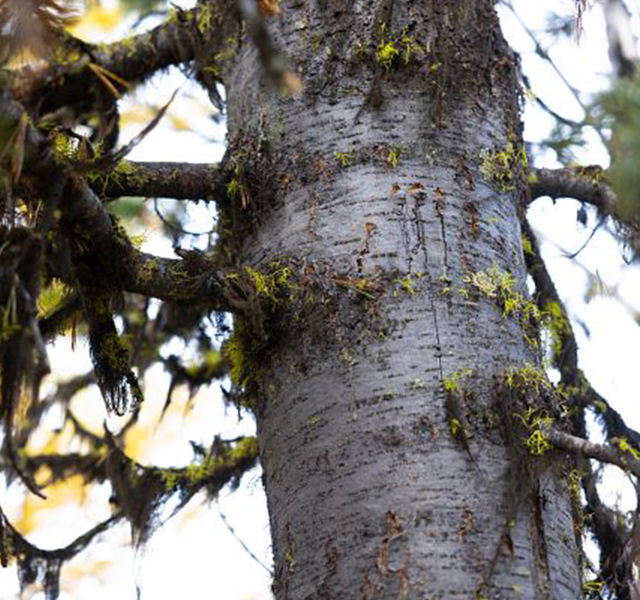
Healthy Whitebark Pine with bear claw imprint
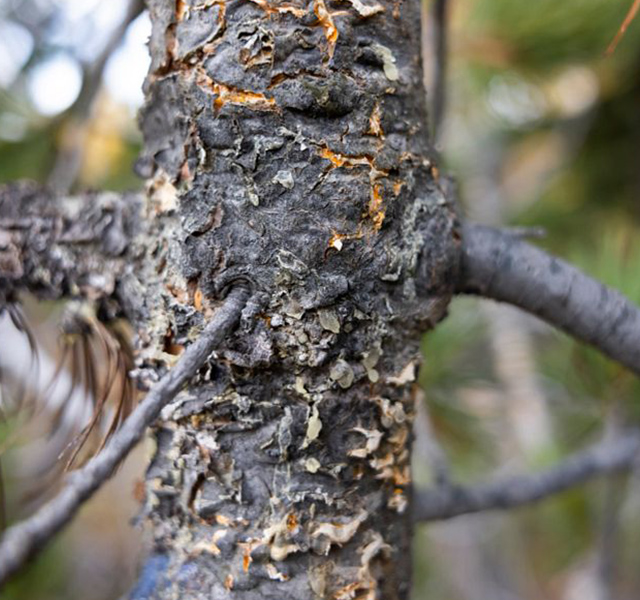
Blister rust-affected Whitebark Pine
Here’s the work that happened this summer to gather Whitebark Pine seeds in preparation of improvements to the Nupqu Native Plant Nursery.
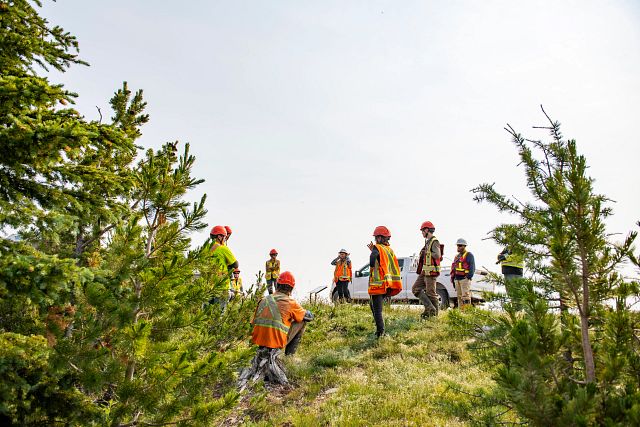
In July, TC Energy contracted a 15-person Geoterra IRS Ltd crew to set up cages over 12 days on healthy Whitebark Pine trees to collect cones near the Elko section route and Kimberley, B.C. These trees were identified as good candidates for Whitebark Pine cone gathering during fall 2020.
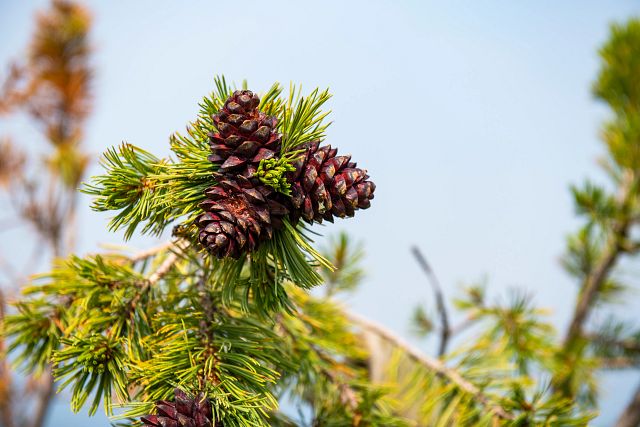
Whitebark Pine cones grow near the top of the trees where they are highly visible and accessible to birds. These cones don’t typically fall to the ground. Nutcrackers harvest the seeds while the cones are still on the trees then hide or ‘cache’ the seeds in the ground as a supply of food during winter and spring when other food sources are scarce. For conservation efforts, cones need to be collected from the trees in order to harvest the seeds.
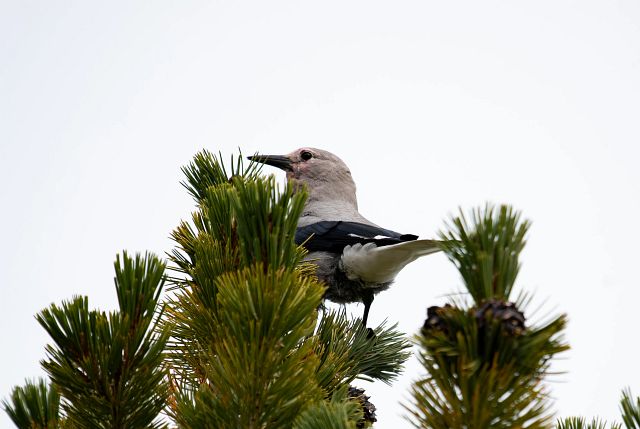
Wire cages were required to place around cones to protect them from wildlife who eat the seeds.
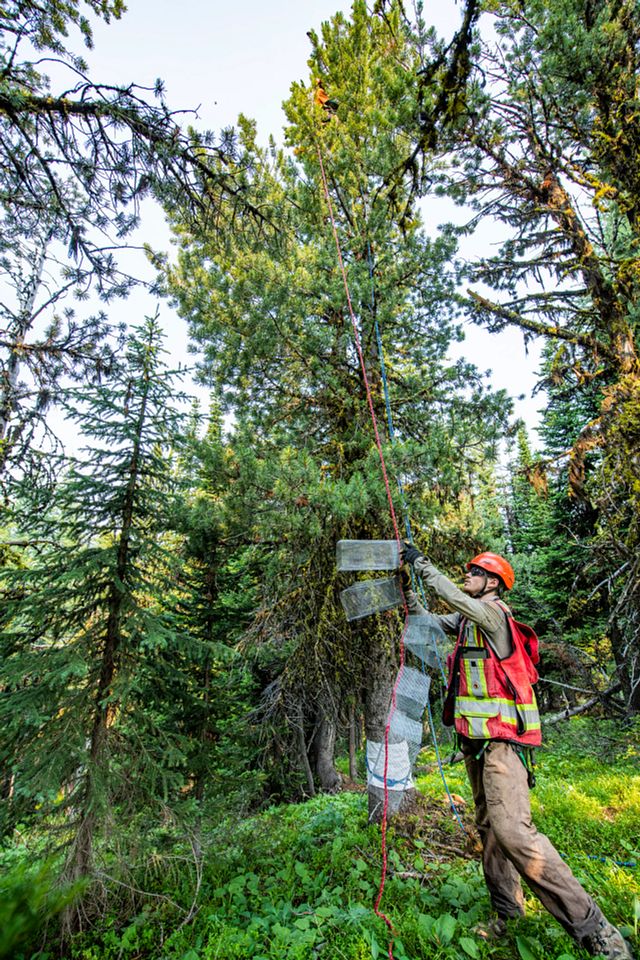
Cages were set up by crews working in pairs, climbing trees using rope systems. The crew member on the ground was responsible for data collection, including tree location and tree number, which will be shared with Provincial agencies and the Whitebark Pine Ecosystem Foundation of Canada. This summer, the Geoterra team added 15 trees to Provincial Whitebark pine recovery program through their work.
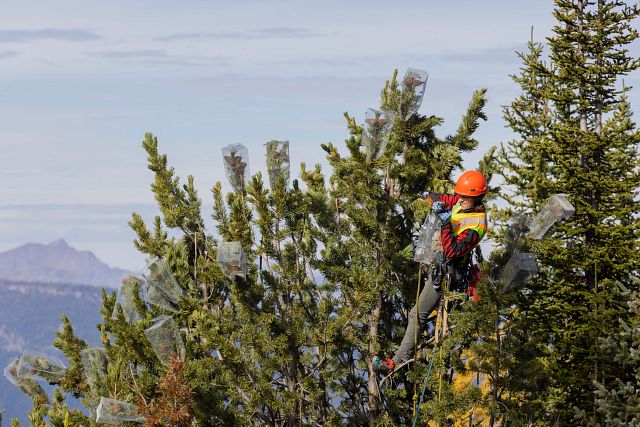
In September, when seeds in cones had matured, the Geoterra team returned to their collection sites to remove cages and collect the cones. Given the number of trees, this part of the process took 14 days.
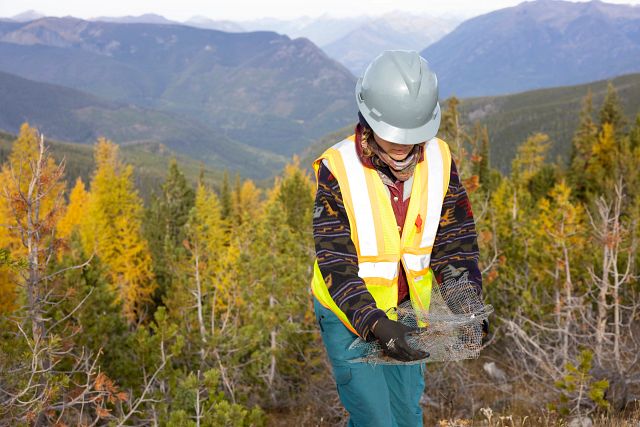
Cages in good condition were folded for re-use.
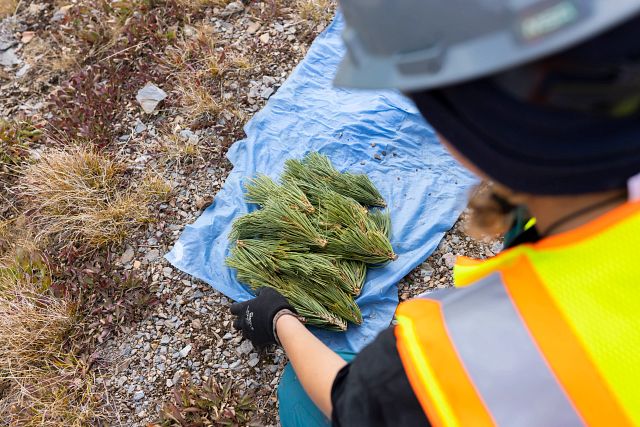
Cones from each tree were identified and stored separately from other trees’ cones at a facility in Kimberley. Later this fall, once dried, cones will be broken apart to harvest their seeds. Up to 50 seeds can come from one cone. In addition to cones, Geoterra crews collected branch tips or ‘scion’ to conserve tree genetic information and for future grafting research purposes.
Over the next few months, while construction on the Nuqpu Native Plant Nursery is underway, the seeds will stay in storage. In 2023, these seeds will be sown and grown at the nursery for two years before planting on specified West Path Delivery Program sections. The timeline for planting the Whitebark Pine seedlings aligns with West Path construction project completion when route reclamation is well underway and tree planting near the route is appropriate. In addition, some seedlings will be tested for blister rust resistance and those that exhibit resistance will be used to support future Whitebark Pine recovery efforts within B.C.
Did you know?
A recent ten-year pipeline research study highlighted success of land reclamation efforts.
Reclamation efforts have also been highlighted recently in TC Energy’s ‘Lifecycle of a pipeline’ video and Coastal GasLink’s article on reclamation.



